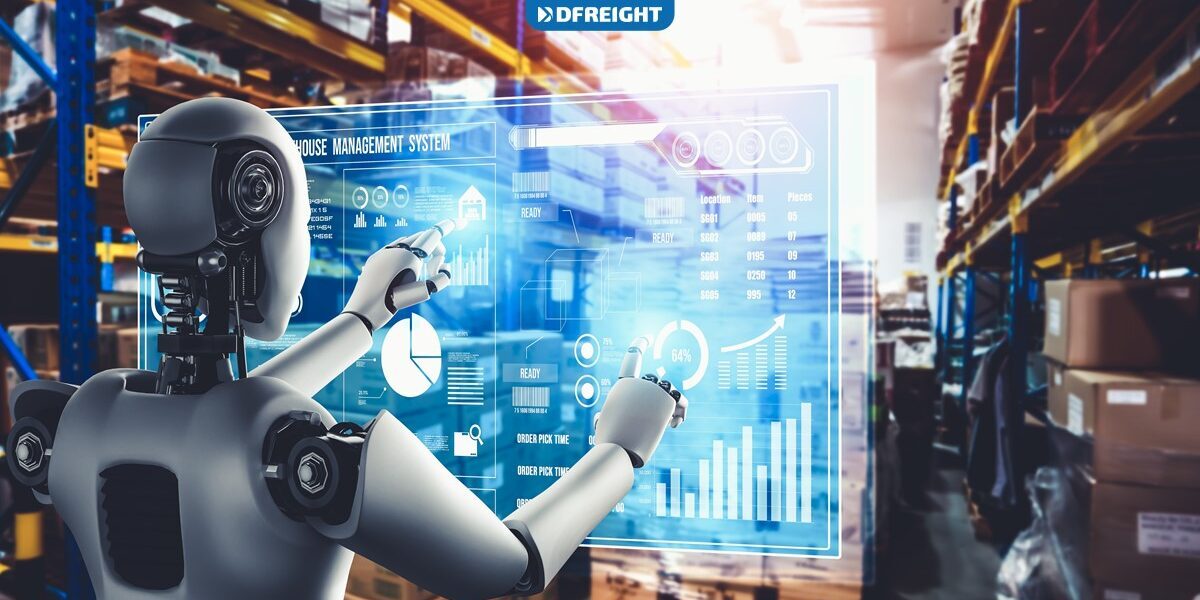The logistics industry has witnessed a remarkable transformation with the advent of autonomous technologies. Among these technological marvels, robotic dogs have emerged as the unsung heroes revolutionizing the way goods are received, stored, and delivered. These intelligent machines, equipped with advanced sensors, cameras, and artificial intelligence, are proving to be a perfect fit for warehouses, distribution centers, and transportation hubs.
In this article, we will explore the diverse applications of robotic dogs in logistics and delve into the immense potential they hold for enhancing efficiency, productivity, and security. Crime-fighting robot dog joins NYPD
The Rise of Robotic Dogs in Warehouses

The rise of robotic dogs in warehouses has transformed the logistics landscape, revolutionizing the way goods are handled and enhancing operational efficiency. These remarkable machines have proven their mettle by seamlessly navigating even the narrowest aisles, conquering staircases, and defying gravity to operate elevators. With their agile movements and precision, they have become indispensable allies in the quest for streamlined warehouse operations.
One of the key advantages of robotic dogs is their ability to transport goods within the facility with ease. Working alongside human workers, they assist in picking and packing tasks, reducing the risk of injuries and increasing overall productivity. These mechanical canines are programmed to perform repetitive and physically demanding tasks, leaving human workers free to focus on more complex and creative aspects of their jobs.
Moreover, the integration of robotic dogs into warehouse operations presents numerous benefits for logistics companies. These mechanical marvels can significantly reduce labor costs by taking on repetitive and physically demanding tasks, allowing human workers to focus on higher-value activities.
Furthermore, the precise movements and agility of robotic dogs enable them to maximize space utilization, optimizing warehouse layout, and improving overall storage capacity.
However, as with any technological innovation, the widespread adoption of robotic dogs in warehouses does present certain challenges. Integration into existing logistics systems requires careful planning and investment in compatible infrastructure and software.
Ensuring seamless communication and coordination between robotic dogs, other machines, and human workers is crucial for successful implementation. Additionally, addressing concerns surrounding public perception and acceptance of robots in the workforce is essential.
Last-Mile Deliveries: Canine Couriers Take Center Stage
The last mile of delivery has long been a logistical challenge, but robotic dogs are rewriting the rules.
Equipped with advanced GPS and mapping technology, these intelligent canines navigate through streets, optimizing routes to avoid traffic congestion and guaranteeing timely deliveries.
New Super Intelligent Robot Dog
With their robust design and secure cargo compartments, they are capable of carrying packages securely and efficiently, making them ideal for last-mile delivery operations. By leveraging their autonomous capabilities, robotic dogs are reshaping the delivery experience, reducing delivery times, and enhancing customer satisfaction.
Unleashing Security: Robotic Dogs as Vigilant Watchdogs
Security is a paramount concern in the logistics industry, and robotic dogs are taking up the mantle of protecting valuable assets.
These vigilant watchdogs are equipped with video surveillance cameras and thermal sensors that enable them to patrol facilities, ensuring round-the-clock security. Their ability to detect anomalies and send real-time alerts serves as a potent deterrent against theft, vandalism, and unauthorized access.
In addition to their physical prowess, robotic dogs are equipped with advanced scanning capabilities. By autonomously scanning barcodes and utilizing RFID technology, they facilitate efficient inventory management.
This eliminates the need for time-consuming and error-prone manual checks, ensuring accurate tracking and inventory control. With their unwavering attention to detail and tireless work ethic, these robotic dogs help optimize warehouse processes and contribute to a more streamlined and efficient supply chain.
By augmenting existing security measures, robotic dogs bolster the safety of warehouses and distribution centers, providing peace of mind to logistics companies.
Collaboration, not Competition: Humans and Robotic Dogs as a Dynamic Duo
Contrary to popular misconception, the integration of robotic dogs into the logistics industry is not about replacing human workers but enhancing their capabilities. These intelligent machines complement human workers by taking on repetitive and physically demanding tasks, allowing humans to focus on more complex and creative aspects of their roles.
Picture this: a bustling warehouse filled with robotic dogs maneuvering through narrow aisles, swiftly picking up items, and seamlessly collaborating with human workers. It’s a symphony of efficiency and innovation, where humans and robotic dogs work together in perfect harmony.
By working collaboratively, humans and robotic dogs can create a synergistic partnership, combining their unique strengths to achieve optimal efficiency and productivity.
Humans bring their critical thinking, problem-solving abilities, and adaptability to the table, while robotic dogs contribute their precision, speed, and tireless work ethic. Together, they form a dynamic duo that is greater than the sum of its parts.
This collaboration represents a paradigm shift in the logistics industry, where humans and robots can coexist and thrive in a mutually beneficial ecosystem. Instead of viewing robotic dogs as competitors, logistics companies now see them as valuable teammates, augmenting human capabilities and driving operational excellence.
Moreover, the partnership between humans and robotic dogs goes beyond simple task delegation. It fosters innovation and encourages both parties to push the boundaries of what is possible.
Human workers are empowered to explore creative solutions, optimize processes, and make strategic decisions, while robotic dogs continuously evolve with advancements in technology, becoming more versatile and adaptable.
In this new era of collaboration, humans and robotic dogs are rewriting the rules of the logistics industry. It’s not a battle for supremacy, but a celebration of the unique strengths that each brings to the table.
Together, they create a formidable force that propels the industry forward, redefining efficiency, productivity, and the very notion of what it means to work in harmony with intelligent machines.
Overcoming Challenges on the Path to Adoption
While the potential of robotic dogs in logistics is undeniable, several challenges must be addressed to ensure widespread adoption. Integrating these machines into existing logistics systems requires substantial investment in compatible infrastructure and software, facilitating seamless communication and coordination.
Imagine a world where robotic dogs seamlessly navigate through warehouses, working side by side with human workers, optimizing processes, and streamlining operations. It’s a vision that holds tremendous promise, but it’s not without its obstacles.
One significant challenge lies in the technical aspect of integrating robotic dogs into existing logistics systems. Companies need to invest in compatible infrastructure and software that allow for seamless communication and coordination between humans and machines. This requires careful planning, a substantial investment, and a commitment to embracing technological advancements.
Beyond the technical challenges, public perception also plays a crucial role in the widespread adoption of robotic dogs. There may be concerns about job displacement and the impact on the workforce. It’s essential to address these concerns by educating the public about the collaborative nature of human-robot partnerships.
Rather than replacing human workers, robotic dogs serve as valuable tools that enhance human capabilities. By taking on repetitive and physically demanding tasks, they free up human workers to focus on higher-value activities, fostering a more fulfilling work environment.
Highlighting the benefits of utilizing robotic dogs as tools rather than replacements is key to overcoming these challenges. Emphasizing the increased efficiency, improved safety, and enhanced productivity that comes from collaborative human-robot partnerships can help change public perception and pave the way for widespread adoption.
The journey to embracing robotic dogs in logistics may have its hurdles, but with the right investments, education, and a shift in mindset, we can unlock the full potential of these remarkable machines and revolutionize the logistics industry as we know it. Together, we can overcome challenges and create a future where humans and robotic dogs work hand in paw to redefine efficiency, productivity, and the very nature of work itself.
Conclusion
The logistics industry is at the cusp of a transformative era, and robotic dogs are leading the charge. These intelligent canines have demonstrated their prowess in warehouse operations, last-mile deliveries, security, and collaboration with human workers.
Their capabilities to navigate complex environments, optimize routes, and streamline processes have proven invaluable in enhancing efficiency, reducing costs, and improving customer experiences. As technology continues to advance, robotic dogs will evolve into even more sophisticated and capable companions, further revolutionizing the logistics landscape.
Logistics companies that embrace these autonomous technologies will position themselves at the forefront of innovation and gain a competitive edge in an ever-evolving industry. With the collaborative efforts of humans and robotic dogs, the logistics industry is set to enter an era of unprecedented efficiency, productivity, and, most importantly, a harmonious blend of human creativity and robotic precision.




